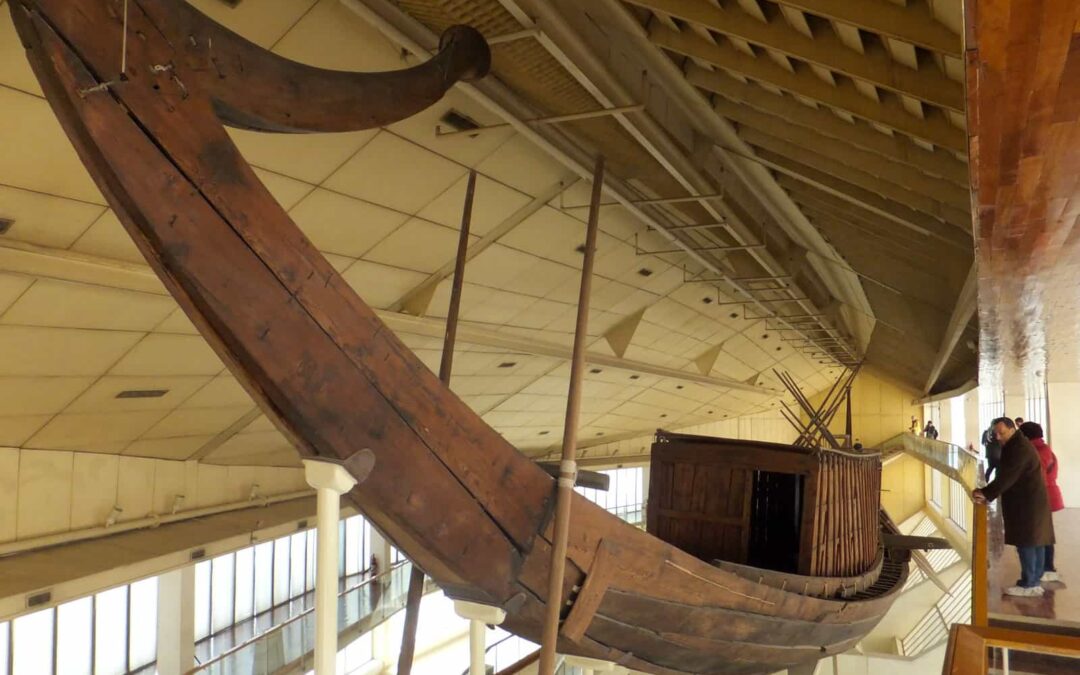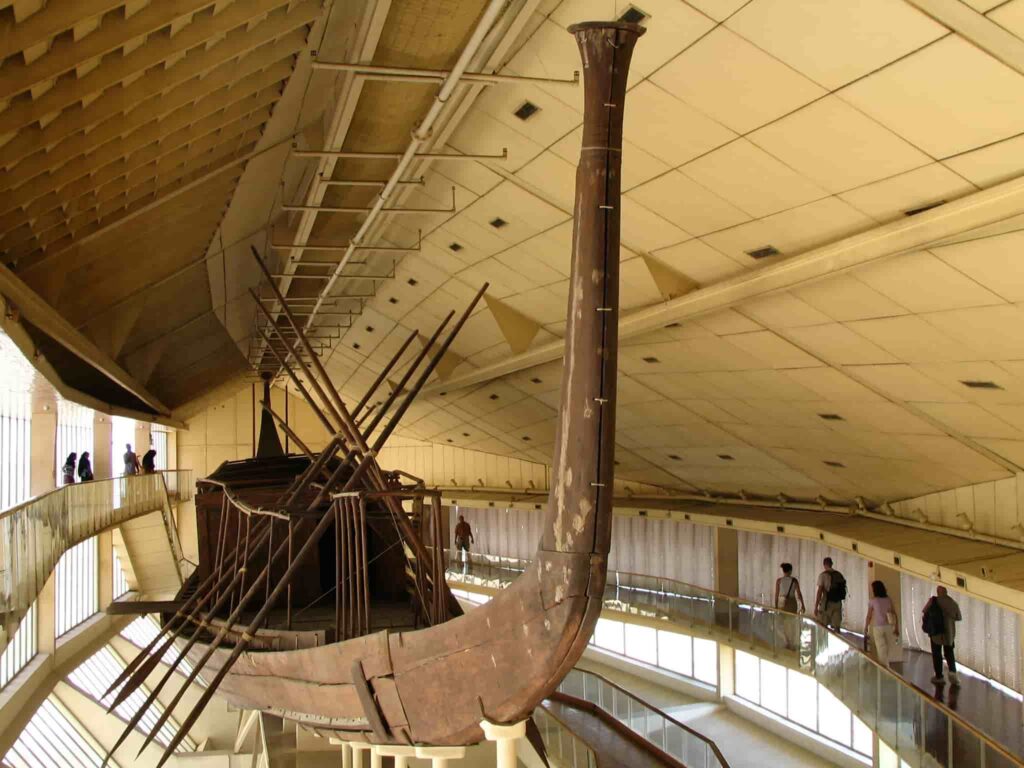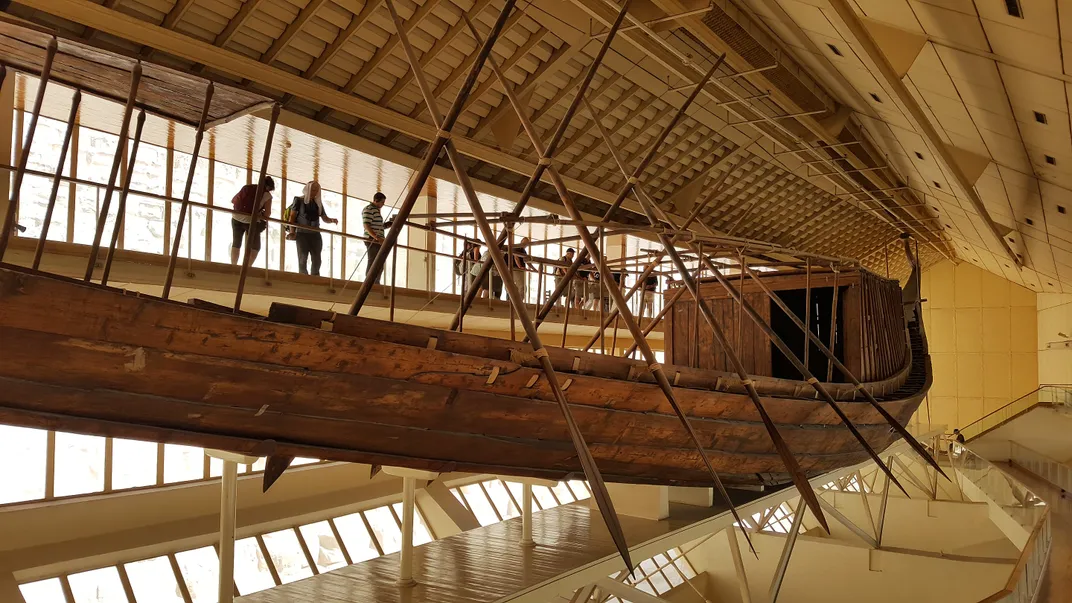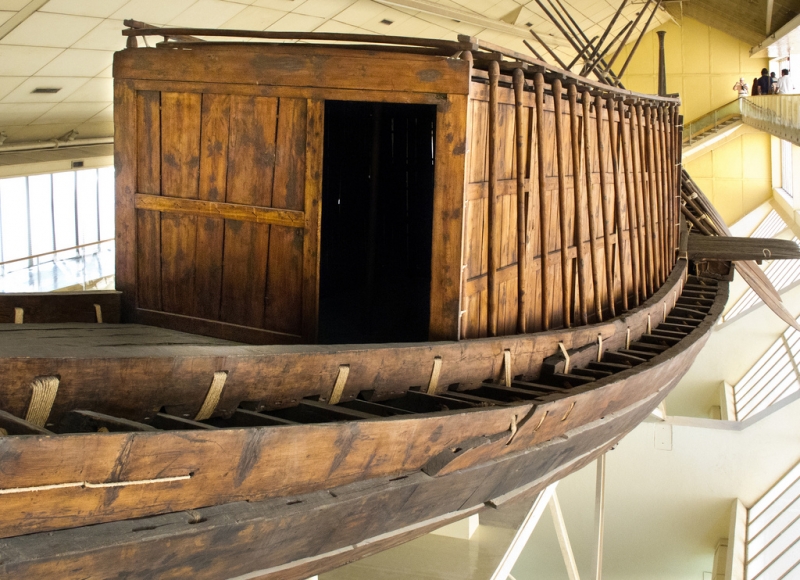Pharaoh Khufu’s Solar Boat, discovered in 1954 near the Great Pyramid of Giza, remains one of the most extraordinary archaeological finds of ancient Egypt. This 4,500-year-old vessel, buried in over 1,200 carefully disassembled pieces, reveals much about the technological and spiritual sophistication of the Old Kingdom. Its reconstruction and preservation highlight the interplay between engineering brilliance and profound religious symbolism.
Unveiling a Masterpiece: Discovery and Preservation
In 1954, archaeologists conducting routine surveys near the southern base of the Great Pyramid uncovered a rectangular trench sealed by 41 massive sandstone blocks. Beneath the seal lay an incredible treasure: the dismantled remains of a large wooden vessel. The excavation team, led by Kamal el-Mallakh, meticulously unearthed the pieces, which had been buried with the utmost care to protect this sacred object.

Over 17 years, Hag Ahmed Yussef, a master restorer, pieced together the 44-meter-long and 6-meter-wide vessel. This task required an exceptional understanding of ancient shipbuilding techniques, as well as the restoration of aged cedarwood and rope bindings. The result was a fully reconstructed vessel, now displayed at the Grand Egyptian Museum.
The Symbolism of the Solar Boat
The Solar Boat is more than an artifact—it is a spiritual relic. In Egyptian cosmology, boats were vehicles of divine and pharaonic power, symbolizing both the sun god Ra’s daily journey across the sky and the pharaoh’s ascension to the afterlife. This particular vessel, intricately crafted, was likely intended to carry Khufu’s soul through the heavens to join Ra in eternal harmony.

The presence of the boat underscores the deep connection between physical craftsmanship and metaphysical beliefs in ancient Egypt. Its burial near the pyramid—Khufu’s eternal resting place—reinforces its spiritual purpose as part of the pharaoh’s elaborate funerary rites.
Engineering Ingenuity
Constructed primarily from Lebanese cedar, the Solar Boat showcases advanced joinery techniques. Ancient Egyptian shipbuilders employed wooden dowels, esparto grass ropes, and a mortise-and-tenon system to assemble planks without using nails. This method allowed for flexibility and watertight durability—hallmarks of ancient maritime engineering.

The boat’s design includes a small enclosed chamber thought to have been reserved for the pharaoh, further emphasizing its ceremonial function. Decorative elements such as copper fittings and polished cedar pillars highlight the artistry and aesthetic considerations of its creators.
Modern Legacy
The Solar Boat has become an enduring symbol of ancient Egypt’s ingenuity and spiritual depth. Initially housed in a climate-controlled museum near the Great Pyramid, it was recently relocated to the Grand Egyptian Museum to ensure optimal preservation. This move underscores the ongoing commitment to safeguarding Egypt’s heritage.

Today, the Solar Boat stands as a testament to the intersection of art, engineering, and spirituality. It invites us to marvel at the achievements of ancient civilizations while pondering humanity’s universal quest for transcendence and eternity.
Conclusion
Khufu’s Solar Boat is not merely a relic; it is a window into the worldview of the Old Kingdom. From its discovery to its reconstruction, the vessel speaks volumes about the Egyptians’ technological prowess and their intricate beliefs about life, death, and the divine. As it graces modern museums, the Solar Boat continues its symbolic voyage, bridging the ancient and modern worlds.

